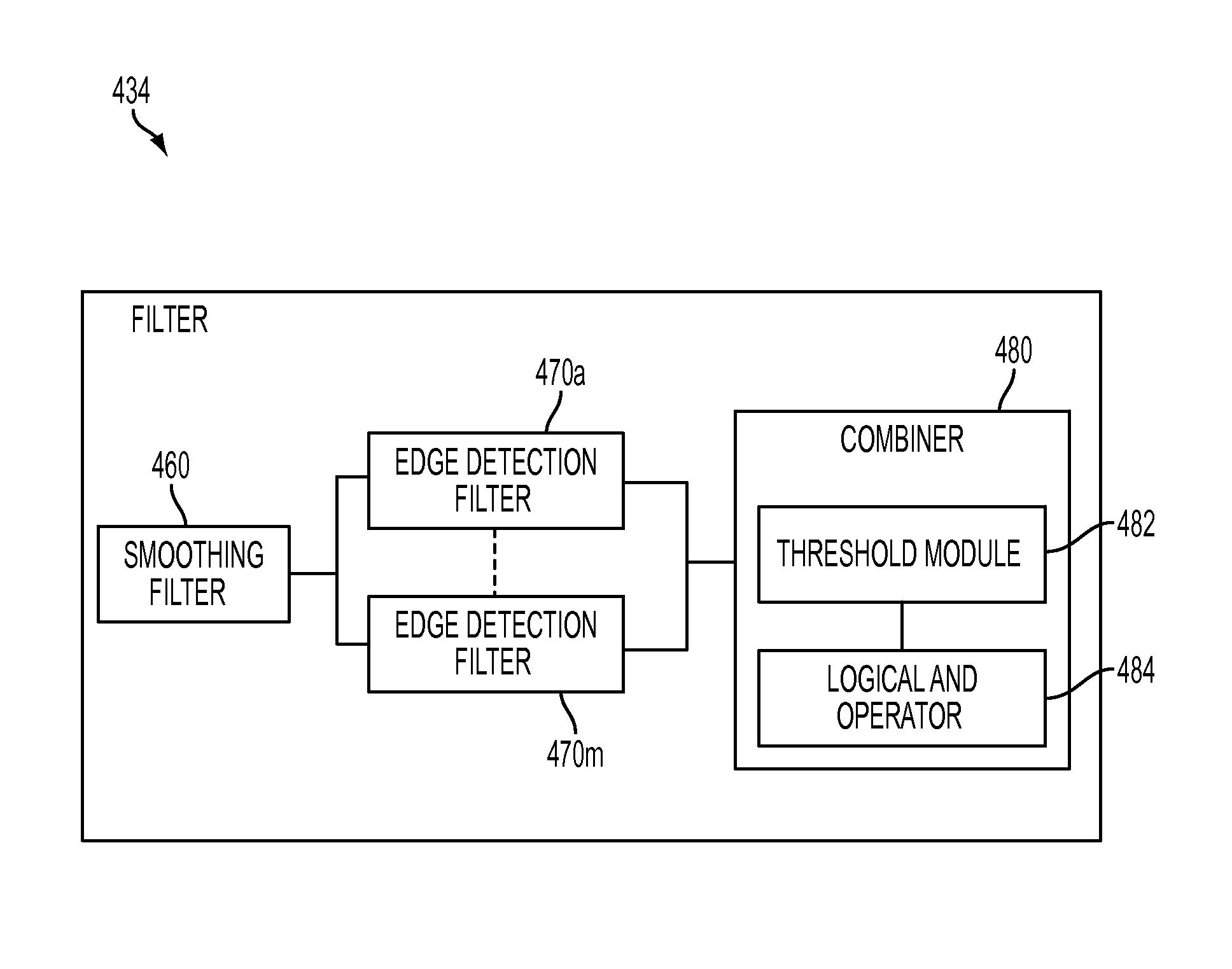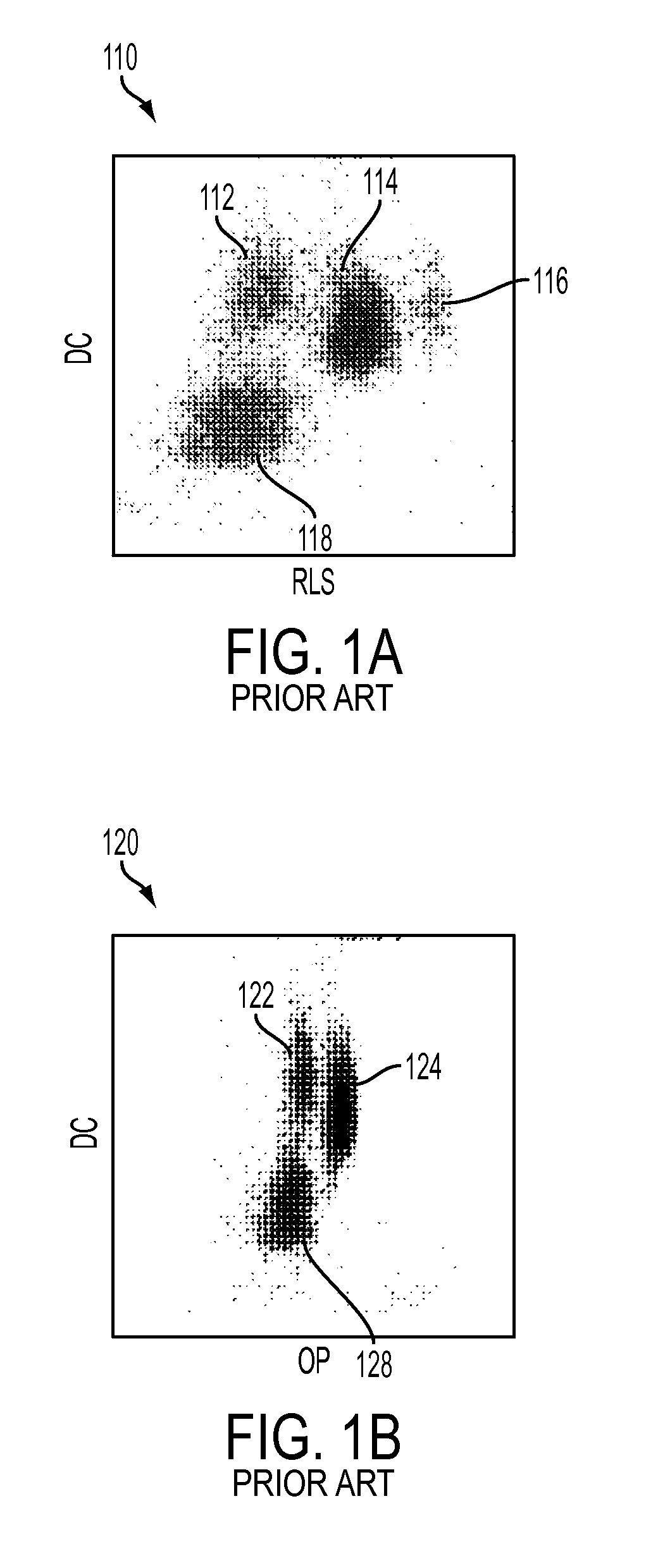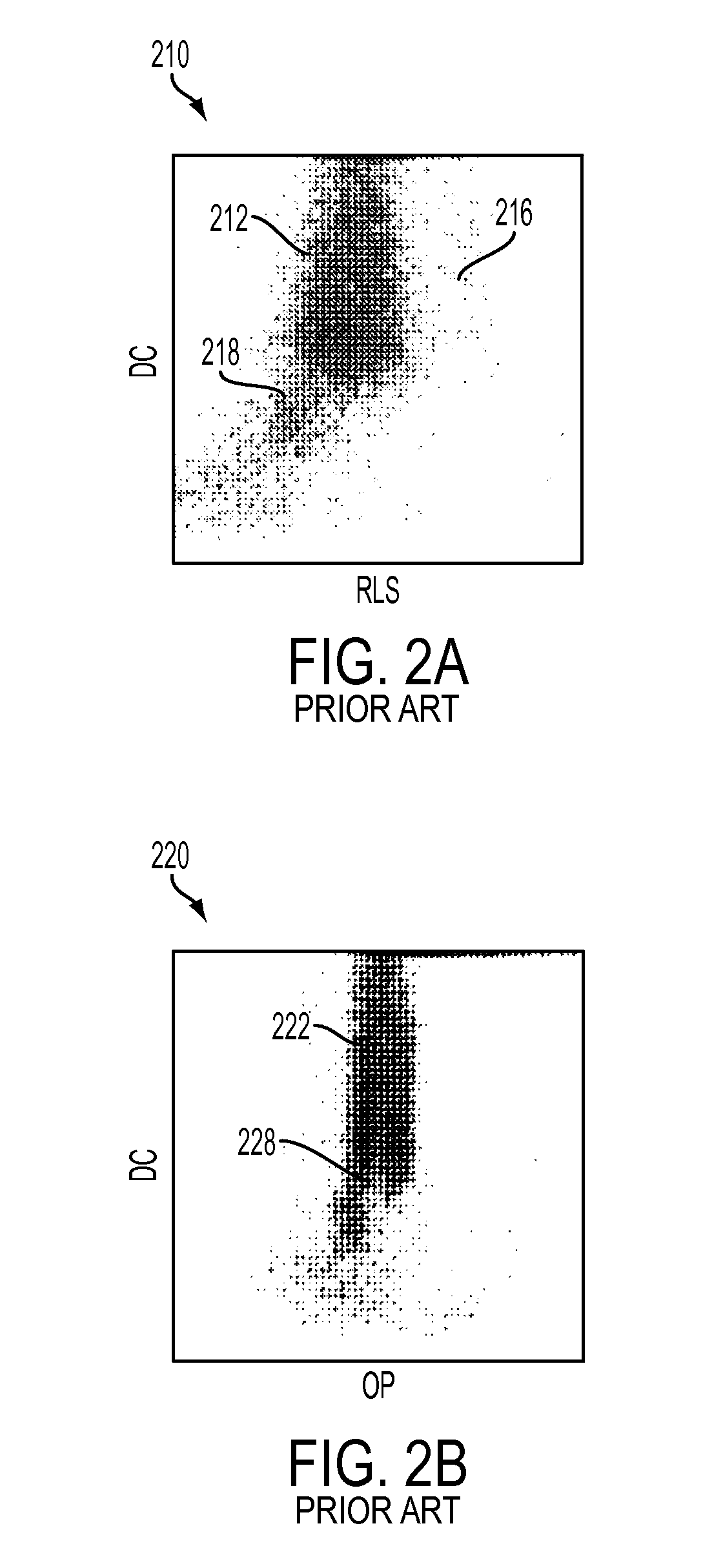Non-Linear Histogram Segmentation for Particle Analysis
a particle analysis and histogram technology, applied in image analysis, instruments, computing, etc., can solve the problems of inconsistent performance, introduction of additional complexity in conventional segmentation process, and complex process of identifying such clusters by automated methods or algorithms, so as to improve the differentiation and segmentation of overlapping particle populations, and improve the differentiation of overlapping or shifted particle populations
- Summary
- Abstract
- Description
- Claims
- Application Information
AI Technical Summary
Benefits of technology
Problems solved by technology
Method used
Image
Examples
Embodiment Construction
[0033]Embodiments of the present invention provide a system and method for segmenting 2D histograms that improve the differentiation and segmentation of overlapping particle populations. The method uses 2D digital image processing techniques to replace conventional peak and valley analysis of multiple 1D histograms alone.
[0034]In essence, according to a feature of the present invention, the 2D histogram is treated as an image wherein each pixel has an intensity value proportional to the corresponding histogram bin amplitude.
[0035]Embodiments of the present invention are described with respect to hematology analyzers. Hematology analyzers attempt to differentiate blood cell populations. Embodiments of the present invention apply a series of steps for segmenting 2D histograms to optimize this differentiation. Those skilled in the art would recognize the disclosed embodiment are not limited to hematology analyzers or the analysis of blood cells and can be applied in numerous environmen...
PUM
 Login to View More
Login to View More Abstract
Description
Claims
Application Information
 Login to View More
Login to View More - R&D
- Intellectual Property
- Life Sciences
- Materials
- Tech Scout
- Unparalleled Data Quality
- Higher Quality Content
- 60% Fewer Hallucinations
Browse by: Latest US Patents, China's latest patents, Technical Efficacy Thesaurus, Application Domain, Technology Topic, Popular Technical Reports.
© 2025 PatSnap. All rights reserved.Legal|Privacy policy|Modern Slavery Act Transparency Statement|Sitemap|About US| Contact US: help@patsnap.com



